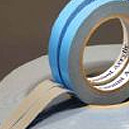The Importance of Tensile Bond Strength in Adhesives
- 13 July 2016
- Posted by: Madhuraka
- Category: Article
 Adhesives are infused with key fixative attributes that target binding prowess and sealant incorruptibility. In short, the chemical binding compound discharges promptly, cures quickly, and anchors with undeniable strength. Now, a purchasing agent is bound to ask about both of these features and more, but the underlying principle driving these queries always comes back to reliability. Adhesive manufacturers are well aware of this high-fidelity factor, which is why they assess tensile bond strength in adhesives. Here’s an account of just why this feature is so important.
Adhesives are infused with key fixative attributes that target binding prowess and sealant incorruptibility. In short, the chemical binding compound discharges promptly, cures quickly, and anchors with undeniable strength. Now, a purchasing agent is bound to ask about both of these features and more, but the underlying principle driving these queries always comes back to reliability. Adhesive manufacturers are well aware of this high-fidelity factor, which is why they assess tensile bond strength in adhesives. Here’s an account of just why this feature is so important.
Assuring Load Dependability
In stating the tensile strength rating, we’re telling the client that the cured bonding system can safely support sizeable loads. The attribute describes the hardened adhesive’s properties in terms of mechanical force. This means that any strain generated by a supported load will remain anchored by the cemented join as long as the force applied to the glued surface does not exceed the tensile strength rating.
The Importance of Tensile Bond Strength in Adhesives
As briefly touched upon in our introductory passage, dependability is a primary feature in a liquid adhesive. Remember, there are no mechanical fasteners, no chunky nuts and bolts to physically hold heavy surfaces in place in this scenario, so the reliability of the cured liquid must be exhaustively determined. Of these important values, tensile strength viability surely must top the desired features list, for this value is the one that most closely identifies with mechanical fastening aptitude.
Underlining the Importance
If we’ve given our audience the idea that this class of adhesive is simply used for supporting walls and construction materials in some apartment complex, we’re not doing the product justice. The tensile bond strength in adhesives is a figure that allows aircraft panels to be securely bound in place, plus metal-to-metal joins are easily accomplished due to that aforementioned reliability factor. Indeed, a superior adhesive with this kind of solid muscle is perceived as every bit as strong as the surrounding metal parts. The only other point of contention here is a need to balance hardness against elasticity, for this supplementary property reinforces strength while attenuating the vibrations that would otherwise undermine the join.
Tensile strength gifts an adhesive with the dependability required to make a chemical fixative every bit as reliable as any lesser mechanical fastener. Additionally, the amorphous sealant fills every crack and contour, thus distributing the chemical compound throughout the joining surfaces to create a large cross-sectional area seal that can withstand the stress of several thousand pounds per square inch.

